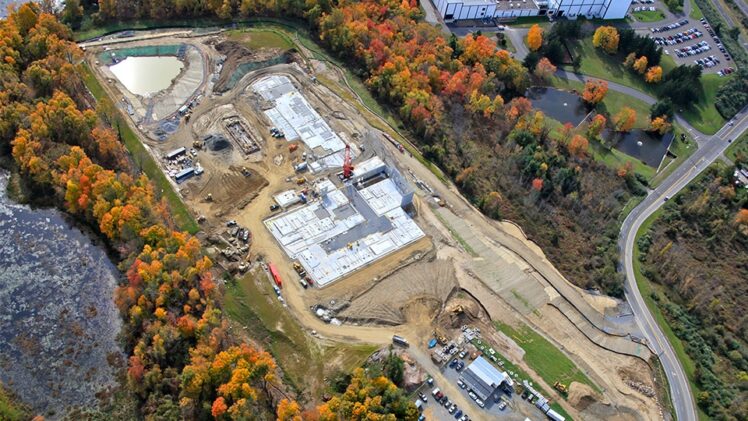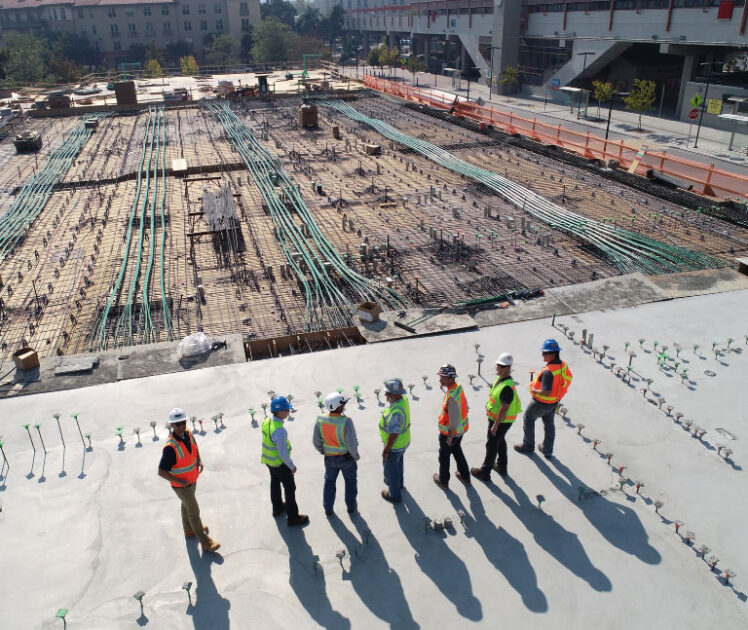Home › Business › Construction
What Is Design-Build Method In Construction And Its Benefits
Published on:
If you’ve thought about building a house or a commercial building, chances are, you’ve stumbled across companies offering design-build services. And, if you’re anything like most people, you’ve thought to yourself – what does this mean?
Well, that’s what we’re here for. Today, we’re going to take a look at the design-build method, figure out what it is, why it’s important, and outline its main benefits.
If that sounds like a plan you can get behind – we can get started right away!
Contents
What Is Design-Build?

Think of the design-build method as the modern man’s “master builder” concept.
The design-build method is a project delivery system for commercial and/or residential construction projects. As you can probably tell by the name, the design-build method streamlines the entire scope of a construction project under the same canopy, keeping everyone on the same page and focused on a single goal – the success of the project.
The essence of D-B is to deliver a project where' all services (from project planning to construction) are contracted and handled by a single entity. You may call that entity a firm, a project-owner, or a design-builder – that’s entirely up to you.
What Are The Main Differences Between Design-Build And Design-Bid-Build?
Unlike the traditional method, otherwise known as design-bid-build (or design-tender), where' everyone has separate responsibilities and goals, design-build consolidates all of its efforts to create a unified front with a single, shared responsibility.
The D-B-B method relies on several teams at once. On one side, you have your project planners, architects, and designers, while on the other end, you have your engineers, builders, and construction workers.
The problem with this method is that these entities often don’t see eye-to-eye, and they frequently get into scheduling errors, clashing of ideas, as well as many other problems.
Design-build eliminates all of that. Here’s how.
How Does Design-Build Process Look Like?

To better understand how and why design-build works better than anything else, we’ve talked to one of the renowned design-build Los Angeles firms and asked us if they could outline the process for us, potentially helping us grasp all the nuances of this method.
Here’s what they’ve taught us.
Five-Phase Design-Build Process
Every project is made up of five essential phases.
- Team Selection – You or the design-build company you’ve chosen will select individuals and/or firms that will handle the project. These include a construction firm, architect(s), and engineers.
- Project Planning – The handpicked team will collaborate with you to plan the project according to your vision and budget.
- Design – Collaborating with you, the team will come up with a design for the entire project based on the plan you’ve come up with.
- Construction – The construction will begin once the final design has been approved and you’ve handled the project’s financial aspect. Everyone will stay involved during the construction phase, as well.
- Completion – Congratulations! The project is finished.
Naturally, we could go on about each of these phases, but let’s save that for another day.
What Are The Benefits Of The Design-Build Method?

Now that we fully understand what D-B is and how it works – it is time for us to comprehend why this construction method is so popular.
And, as far as we’re concerned, the best way to understand why something’s popular is to look at the advantages it brings.
Let’s take a look at four of them.
Teamwork
Teamwork makes the dream work, right? Quite frankly, in this case, that couldn’t be more accurate.
As we’ve pointed out in the beginning, the design-build team has only one goal in mind – a successful project that exceeds your expectations. Since this is the way the entire team operates right from the start, it is easy to expect seamless collaboration and perfect teamwork.
The easiest way for you to notice the team spirit is to just look at the team when something goes wrong. In the event of a problem or any other minor or major hiccup, instead of finger-pointing (architects blaming engineers and vice versa) – they actually get together, and they look for a solution as one.
Streamlined Accountability

Arguably the most significant advantage of the D-B approach lies in the fact that you have one entity at the top. One person or a firm is accountable for the entire scope of the project – from ground zero to the finished product. That means that all accountability lies within a single body.
While on hand that might be stressful for the person at the helm, you are at a great advantage as a hirer. Whatever goes wrong (or right) – only one can be held accountable for it. With such responsibility and accountability on their shoulders, you can be absolutely certain that they’ll do all in their power to make sure everything goes smoothly.
Expertise And Experience
Another great advantage that comes from the design-build method is that you can rely on their experience, expertise, and knowledge during the entire run of the project.
Design-build companies not only know how to handle a construction project, but they can also help you identify and bring together a cluster of first-rate experts in their respective fields – from architects to engineers. Furthermore, with years of experience under the belt – they’ll be more than competent to overcome any obstacle that might happen along the way.
But that’s not where' it ends. Obtaining licenses, handling paperwork, and all that bureaucratic nonsense – they’ll have someone manage it for you.
Efficiency

In construction, there are three things that are of greater value than all others – quality, money and time.
If you can manage to save time and money and not compromise quality – you’ve got the game mastered.
Well, design-build companies have achieved just that. By streamlining accountability, bringing everyone under the same umbrella, and keeping them focused on the same goal, D-B firms have managed to cut costs, save time, and offer exquisite services.
And, this is not just hearsay with no evidence to back it up. Feel free to look up the numbers. Compared to design-bid-build, design-build projects are, on average, up to 6% more affordable and up to 12% faster.
That’s efficiency 101.
Conclusion
Overall, it’s tough not to see the benefits of the design-build method, regardless of the scope or nature of the construction project. It’s like regular construction on steroids – but without the side effects.
Hopefully, all the information provided in this short blog will help you make an informed decision when the time comes. We certainly wouldn’t want you to regret not exploring a certain option, so make sure you brace yourself with knowledge first.
For any more information on design-build – we’ll be around!
Share With Your Friends